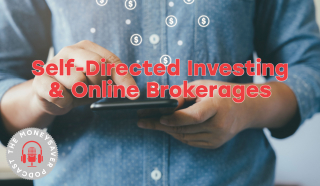Investing

You work hard and save your money so that when you retire, you still have the income to do the things you want to do, and maybe save some money for your funeral and for your heirs or charities or the care of your pet parrot. There is a vast library of articles about estate planning, but have you looked at your beneficiary designations lately? If you have designated everything to flow to your “estate” and expect your executors to sort it out, read on. There are advantages to naming specific beneficiaries.
This article is intended as general information, and your personal circumstances may vary. None of the following information is intended to be financial advice, and you should always consult a lawyer, accountant or financial professional for specific advice about your personal situation.

It’s not exactly a newsflash that buying a first home in today’s Canada is only a pipedream for many. Prices soared to new highs across the nation during the heights of the Covid pandemic and, although we are now well off of those highs, the subsequent rampant run-up in interest rates has vastly decreased how much potential buyers can and should borrow. Making things even worse, 2022’s stock market decline chipped away at many potential down payments and the current stratospheric level of inflation means that a portion of many pay cheques earmarked towards home savings have been diverted to things like gas and groceries. The reality is that for many young Canadians, their only chance of getting into the housing market any time soon is from either playing the lottery or with a little help from someone else.

When my brothers and I were young, my grandmother gave each of us a single share of Bell Canada for birthdays and graduation gifts. We were excited to receive the telephone company’s shares, then trading in the range of $40 to $50 each.
But the importance of investing for the long-term was lost on me. If I had learned that lesson, I wouldn’t have cashed in my 25 Bell shares before I turned 25.

Ellen Roseman speaks with Sol Amos, entrepreneur and founder of advisorsavvy.com. They discuss the 5 types of financial advisors/planners as well as questions to ask when selecting a financial advisor/planner.

Closer to the end of 2020, Peter Hodson and I, with Belco Private Capital Inc., launched the i2i Long/Short U.S. Equity Fund, a fund focused on small and mid-cap U.S. stocks. Naturally, being Canadian and operating in Canada, it begs the question of why U.S. small and mid-cap (SMID-cap) stocks are in the first place. So, let’s look at some of the reasons why we like U.S. SMID-caps.
More Opportunities
The first reason is obvious; the SMID-cap space in the U.S. is multiple the size of the Canadian SMID-cap space. One of the reasons we like small and mid-cap names, to begin with, is that they tend to fly more under the radar, and markets tend to be slower to catch on to promising companies. As an example, we count roughly 57 analysts who cover Amazon. That is 57 people whose full-time job is

Ellen roseman speaks to Barbara Stewart, Chartered Financial Analyst and Research, about post-pandemic non-retirement as well as her Rich Thinking research on women and money and how women are re-inventing themselves as relating to employment, post-pandemic. She also discusses her five post pandemic financial planning retirement tips.


